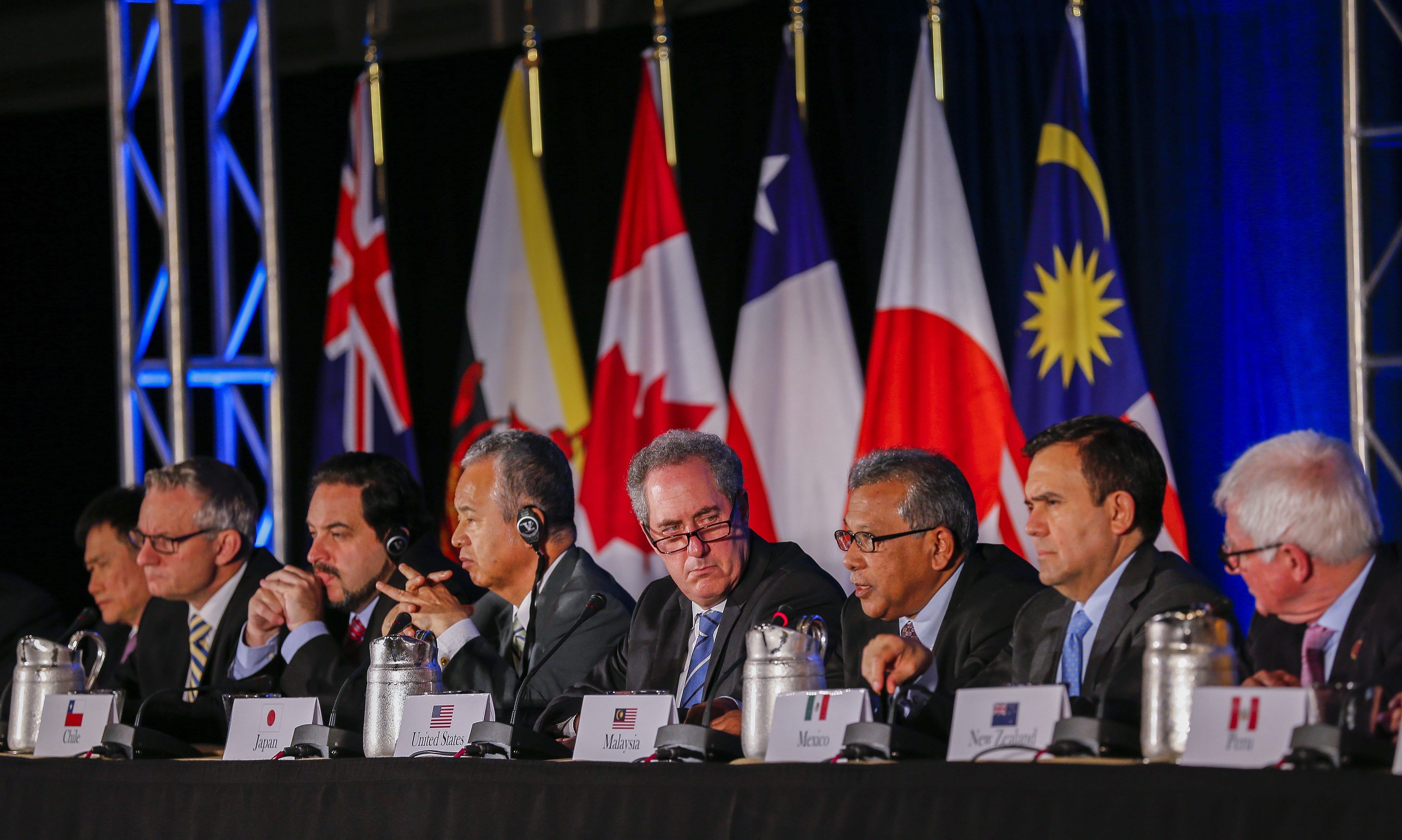Since 12 countries sealed the Trans-Pacific Partnership (TPP), there have been claims that China - the second-largest economy in the world - is the "biggest loser" for being excluded from this trade regime. That is a gross exaggeration.
When a few countries form a new trade bloc that lowers the trade barriers among the bloc's members, the deal may lead to two kinds of changes in international trade.
One is trade creation, which refers to new trading activities created among the member countries. These activities would not occur without the trade deal because the pre-deal trade barriers were too high to allow them to be profitable. Since these trading activities are new, trade creation has no negative impact on a third country which is outside the bloc.
The other kind of change is trade diversion, referring to the trades that formerly occurred between a member country and a non-member country but now is replaced by trades between two member countries. The trade diversion happens because, before the formation of the trade bloc, a country would always buy goods or services from whoever offered the lowest price. After the trade bloc deal, however, a member country may find it less costly to buy from another bloc member, despite the latter's price being higher than the price offered by a non-member country. In such a case, the trade bloc hurts a non-member country which loses trading business with a member country due to trade diversion.
Although details of the TPP have not been published, available information so far suggests that the deal will have limited effects on lowering trade barriers among the bloc members. For instance, the US government boasts that "the partnership eventually would end more than 18,000 tariffs" among the members. In fact, thanks to the World Trade Organisation and existing free-trade agreements, 80 per cent of the exports from the other TPP members to the US are already duty-free. This is even more so for China, whose exports to the US are mainly manufactured goods, most of which enjoy the most favoured tariff treatment. The TPP deal is more meaningful to freeing the trade of some agricultural products, which have so far been subject to various forms of trade protection in the US, Japan, Canada and Australia.
In today's world of globalised value chains, many manufactured goods contain components made in various countries. The "rules of origin" are crucial to the effectiveness of any trade bloc because they determine what share of components made by the bloc members will qualify goods for duty-free treatment. It is reported that the TPP rules require no less than 45 per cent of the value of a vehicle to be made by the bloc members for the product to be treated as a made-in-bloc one.

In comparison, the North American Free Trade Agreement (Nafta), which governs the imports to the US, Canada and Mexico, has more restrictive rules that require a qualified vehicle to have at least 53 to 55 per cent of its components - by net cost - to be made in North America. The TPP, which is to replace Nafta after taking effect, "has the effect of allowing slightly more components to come from outside the trade region, most likely from China", reported The New York Times.
Given the limited duty-free impact, the trade diversion is unlikely to be significant. Not only so, as pointed out by Dr Joseph Stiglitz, a Nobel laureate in economics and former World Bank chief economist, but "the TPP is not about 'free' trade" (for its members), and "the reality is that this is an agreement to manage its members' trade and investment relations".
The provisions to manage trade and investment include: assurance of a minimum period of protection for pharmaceutical patents, a pledge to coordinate macroeconomic policy and not to devalue currencies for export advantages, and a commitment to enforceable labour rights and environmental standards, etc. Regardless of their good intentions, none of these provisions will make trade freer within the bloc, or lower export costs of the bloc's members. How can they cause any loss to China?
An important feature of the TPP is the investor-state dispute settlement (ISDS) that grants the right to foreign investors to sue governments in international tribunals to obtain compensation for profit losses due to the latter's practices in violation of the TPP rules. Will that lead to some "investment diversion" not in favour of China?
Unlikely: China has already signed and put in force bilateral investment treaties with all the TPP members except for the US.
Most of China's bilateral investment treaties carry provisions similar to the ISDS, which was a contentious issue in Canada when the treaty took effect last year.
Finally, is China a "big loser" for being excluded from writing the rules for the Pacific trade bloc that accounts for 40 per cent of the global economy? Just consider what happened 15 years ago: China signed the final deal in 2000 to join the WTO after accepting the rules and conditions set by the US and its allies. Was China anything but a winner in that event?
- The writer is senior research fellow at the East Asian Institute, National University of Singapore.
